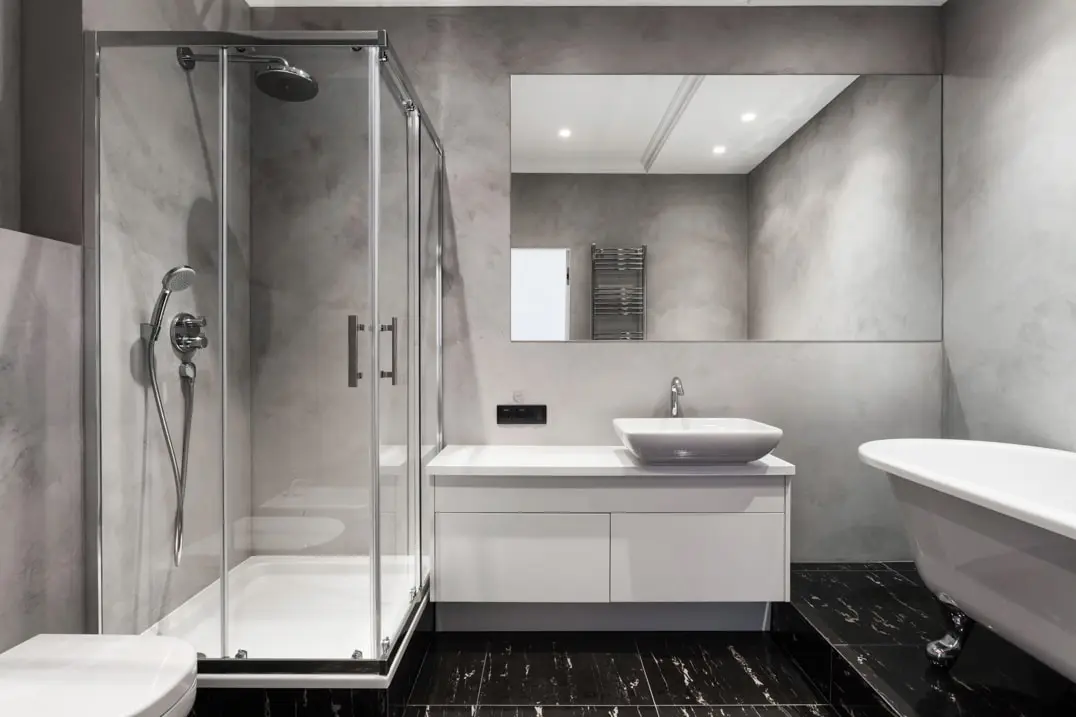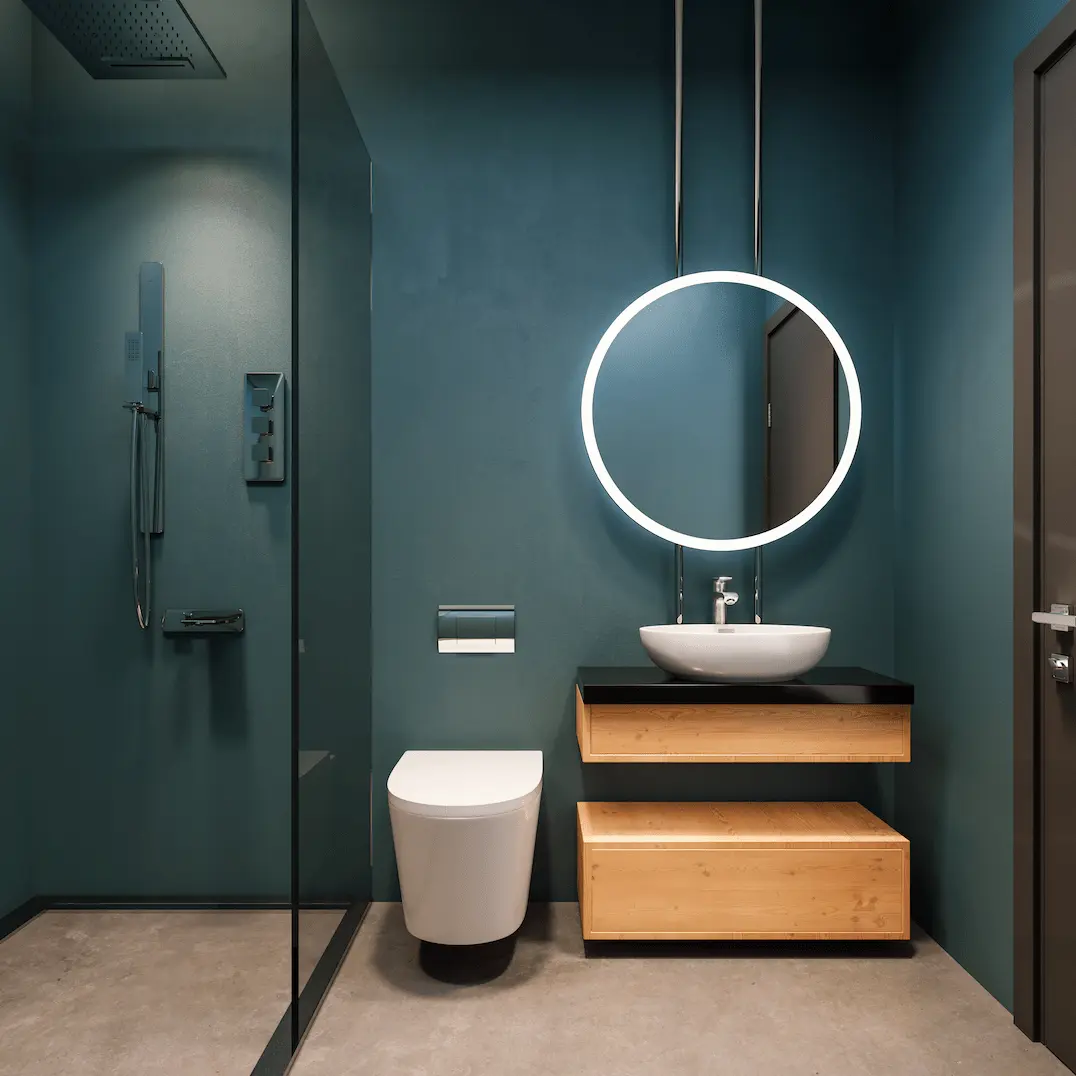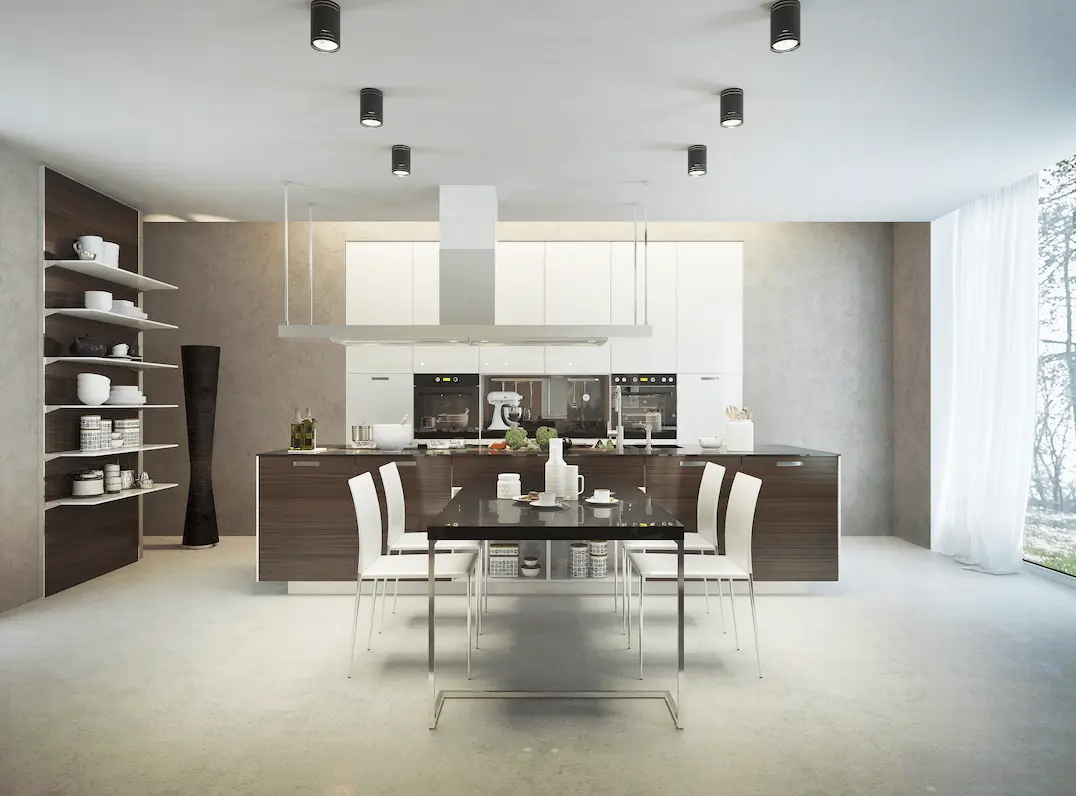Microcement on tiles: advantages, tips and steps to follow
The passage of time does not go unnoticed in our rooms. What once looked new, shiny and attractive, time has made lose its color, yellow and have imperfections. This is when you should consider taking the first step towards renovating different areas and opt for a decorative renovation that brings life back to your spaces.

One of the most affected materials where the passage of time can be significantly noticeable are the tiles in kitchens and bathrooms. Faced with this dilemma, two questions should be asked: do I prefer to renovate the tiles and return to the same point in a few years? Or, on the contrary, do I choose to cover them with another material that gives a better design to my surfaces and a long useful life? Take your time to think about it, however, interior design experts have it clear, the answer is to trust in the microcement.
This decorative coating has gained great popularity in recent years in the decoration scene. It presents the perfect and balanced fusion between design and functionality. A material of a few 2-3 mm thick, easy to work with, with a wide variability of finishes and results with a prolonged life in perfect conditions.
In this article, we will discuss some of the most prominent advantages of using microcement over old tiles, as well as giving you some tips and explaining the steps to follow for its application, in such a way that imperfections do not appear in the future.
Benefits to consider when using microcement over tiles
We have previously mentioned some of its qualities briefly, but now we will develop each of them so that, in this way, you know firsthand why microcement has gained so much popularity among interior decoration professionals.
With microcement, forget about the works
It could be said that it is the virtue par excellence to opt for microcement over tiles. Its impressive adhesion and minimal weight make it the perfect material to be used on all kinds of supports and surfaces. Walls, floors, ceilings, stairs, swimming pools, and everything you can imagine. The material is applied directly onto the tile surface, in this way it is not necessary to remove them, allowing to avoid the long and complex construction process.
Application without reforms or rubble or other waste. You will save time and money, and you will get a durable surface with ease.
El microcemento aporta firmeza y mayor resistencia
With this decorative coating, it is possible to give surfaces a high performance resistance as microcement resists all kinds of factors, both external and internal. You won't have to worry about stains, bumps or scratches. It also fantastically withstands wear from pedestrian traffic and abrasion, as well as sudden temperature changes. Properties that make it the perfect material if what you are looking for is not having to do a remodel in the short term.
Microcement over tiles for anti-slip and waterproof finishes
However, if we have to talk about one of its star resistances, the prize goes to its waterproof character. Innately, it effectively strengthens against high environmental humidity and contact with water, a characteristic that makes it ideal for use in bathrooms and kitchens.
This property can be enhanced if you also add a varnish or sealer, with which you will make it completely waterproof as well as non-slip. Two fundamental characteristics when it comes to the cladding of bathroom walls and floors, the shower, or even the kitchen.
Easy maintenance and cleaning
Are you tired of constantly cleaning and renewing your surfaces? With microcement, you will take that weight off your shoulders as its resistant nature also helps it to last longer. The maintenance to keep it in optimal conditions should be minimal. You will only need water and household cleaning products to make it shine.
In the case of grease stains or something similar, all you need to do is get a specific detergentlike those on our website. The effectiveness of MyCleaner is such that it will be clean in a blink of an eye.
High customization using microcement over tiles
If you choose to apply microcement over old tiles, you will help modernize your spaces with a product that offers a wide variety of finishes in both texture and color. Its decorative potential is so great that you will have the chance to give your kitchens or bathrooms a completely personalized look with a unique and quality design.
Continuous surface without joints, welcome uniformity
Tiles had their moment of glory in the past but now, with the appearance of other more innovative products like microcement, some disadvantages that should be considered are apparent. In this case, we are talking about joints.
Microcement is a continuous material that offers a uniform finish, unlike tiles. A characteristic that stands out both aesthetically, by providing an appearance of infinity, and functionally, avoiding the accumulation of dust in the grooves and thus facilitating cleaning.
Aspects to consider for a good installation of microcement over tiles
Before proceeding with the installation of microcement over tiles, a series of recommendations should be taken into account that will ensure the correct functioning of the product, thus avoiding possible cracks and imperfections that could necessitate a surface renewal.

Respect drying times
In the case of using a type of primer dedicated to non-absorbent surfaces we will opt for our product MyPrimer 200. We must give great importance to the drying time once the surface is coated with microcement over tiles, around 24 hours.
The instructions given in the product data sheet must be followed, as if they are not properly followed, there would be moisture between the coats and thereby the mark of the tile joints. The most common failure when carrying out this type of installation that, following our advice, you will be able to avoid satisfactorily.
Before the second coat of microcement, prime the tiles
Once the 24 hours have been waited as sufficient margin of time to have dried the first layer of microcement, it is recommended to the professional that another coat of primer is applied before applying the second hand of microcement over the tiles. With this, greater stability will be achieved for the surfaces and the absorption levels between the microcement coats will be levelled.
Steps to follow in the application of microcement over tiles
At this point we will show you how to satisfactorily install the microcement over tiles. Eight steps that each one of them must be perfectly fulfilled, as otherwise, this could lead to the appearance of defects in the future surface.
Read the entire application process in detail and pay attention at all times to the product data sheets, necessary to know the quantities and drying times that will make the installation successful.
1. Analyze the state of the tiles
Before carrying out any installation step, you should check the state of the old tiles since, if there is any imperfection such as cracks, fissures, or missing pieces, the same procedure cannot be followed as if the support were in perfect conditions. The substrate must be repaired prior to the placement of the microcement.
2. Cleaning of the support
Once the support has been repaired, the tiles must be thoroughly cleaned, as they cannot present any type of particle that could affect the installation. Avoid the presence of dust, grease, or moisture, once completely ready, you can move on to the next step.
3. Fill the tile joints with microcement
When you have made sure that everything is in order, you should proceed to the application of microcement to fill the tile joints. Otherwise, if this step were not done, we would be taking away stability from the surface, since we would obtain a smooth wall or floor, but with spaces unfilled inside them.
4. Priming of the tiles to be coated with microcement
At this stage, the surface will already be leveled and the joints perfectly filled then, and only then, we can proceed to prime the support. A fundamental step, as it will increase the adhesion of the microcement, which will result in better grip and stability.
Depending on the surface to be coated, one type of adhesion promoter or another will be used. If it is a non-absorbent support, we will have MyPrimer 200. On the other hand, if the surface is absorbent, MyPrimer 100 should be used, helping to regulate absorption.
It may also happen that the support to be coated is slippery. We will need an adhesion promoter like MyPrimer 300 that firmly and safely anchors the microcement to the support.
However, when it comes to a material, such as tiles, normally found in areas with high humidity such as bathrooms or kitchens, our two-component epoxy primer is ideal, MyPoxy. A product through which to block water vapor or humidity.
5. Apply the MyMesh fiberglass mesh in the first coat of microcement on tiles
At this point, the drying times specified in the product data sheets should already have elapsed. Then, the MyMesh fiberglass mesh will be placed on the tiles, before the application of the microcement. Its function? To prevent imperfections such as cracks or crevices in the future surface.
Once this is done, the next step will be, now yes, the first coat of non-pigmented microcement preparation and then sand the surface.
6. Application of second hand of microcement preparation
In this case, the second layer of pigmented base microcement should be applied with the color that has been chosen to be displayed on the walls or floor. Once applied, again, proceed to sand the microcement.
7. Two coats of finishing microcement on the tiles
After allowing the appropriate drying time after the application of the two base microcement layers, two finishing layers of microcement will be applied. Depending on whether the renovation is being done on the floor or wall, one product or another should be used. MyWall, in the case of working with vertical surfaces and MyFloor, if it is about floors.
8. Sealing of the microcement
The final step and one of the most essential ones. You will need to protect the microcement surface on the tiles with a varnish or sealer. This will give the coating a brighter and more intense color, as well as providing it with better resistance properties that will make it more durable over time.
The ideal is to use two coats of MyCover, our water-based acrylic varnish and then another two coats of our water-based polyurethane varnish, MySealant 2k. In this way, you will ensure the firmness of the surface and thereby achieve better quality results.

Price of microcement installation on tiles
It is not possible to specifically predict a base price for this type of decorative renovations. To calculate it, it is advisable to have the help of a professional with experience in the field and who knows in depth the variables necessary to calculate an approximate budget. Factors such as the state of the tile, the dimensions to be covered, the price of labor, and the context where the work is done; all of this will influence the final price.
At MyRevest we have experts who can help you calculate the price of a microcement renovation on tiles. If you need it, you just have to get in contact with us and we will assist you with all the details.